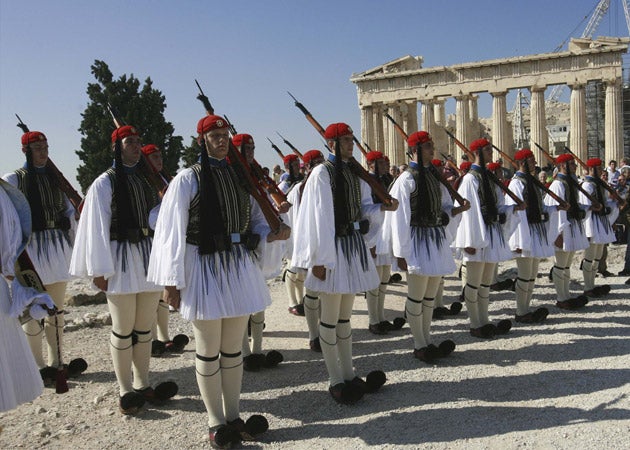The Secret Lives of Buildings, By Edward Hollis

Your support helps us to tell the story
From reproductive rights to climate change to Big Tech, The Independent is on the ground when the story is developing. Whether it's investigating the financials of Elon Musk's pro-Trump PAC or producing our latest documentary, 'The A Word', which shines a light on the American women fighting for reproductive rights, we know how important it is to parse out the facts from the messaging.
At such a critical moment in US history, we need reporters on the ground. Your donation allows us to keep sending journalists to speak to both sides of the story.
The Independent is trusted by Americans across the entire political spectrum. And unlike many other quality news outlets, we choose not to lock Americans out of our reporting and analysis with paywalls. We believe quality journalism should be available to everyone, paid for by those who can afford it.
Your support makes all the difference.Great buildings, writes WG Sebald in Austerlitz, "cast the shadow of their own destruction before them, and are designed from the first with an eye to their later existence as ruins". Edward Hollis does not exactly share the German writer's doleful view of architectural hubris. For Hollis, ruination is merely one stage in a building's passage from idea through reality to enduringly contested myth –neither to be celebrated nor deplored. But there is something Sebaldian about The Secret Lives of Buildings: a digressive pleasure in the sheer strangeness of architecture and the mortal intrigues by which it was wrought.
The book takes as its inaugural emblem a kitsch but exemplary painting by Thomas Cole. The Architect's Dream, completed in 1838, shows a fantastical array of architectural styles crowded together: Gothic cathedral, Corinthian rotunda, Roman aqueduct and Egyptian pyramid. They are all, even more implausibly, brand new.
The painting points, argues Hollis, to an abiding architectural fantasy: the notion that great buildings are defined by their initial perfection, that what counts is the architect's pristine vision, no matter how sullied by nature, war or neglect.
The Parthenon is Hollis's first exhibit for the contrary case, and a recurring motif. The grubby tale of Lord Elgin's pilfery is just one small part of its story. The sacred precincts were gutted by early Christians; an 18-foot statue of Athene was shipped off to Constantinople; the whole structure was rocked by gunpowder in the 17th century and earthquake in the 19th. Fragments are dispersed in the Vatican, Copenhagen, Vienna, Munich, Würzburg and London; replicas (including Elgin's own in Edinburgh) abound. It has become a Parthenon of the mind, a vagrant museum of itself.
And this is Hollis's point: buildings are defined not by their architects' dreams but by the depredations, improvements and vanishing acts effected by history. In part, this is a resuscitation of the "ruin lust" that seized European culture between the 17th and 19th centuries, when picturesque decay and violent fragmentation were prized over architectural integrity. The Secret Lives of Buildings is littered with intriguing examples of desuetude, real and faked. There is the mock-classical wreckage at Frederick the Great's Sans Souci, a crumbling Venice in Las Vegas, the Berlin Wall that shivered itself out of history and into countless souvenirs.
The late-Modernist Hulme Crescents in Manchester provide Hollis with an object lesson in doomed futurism, though here he is perhaps writing at some slightly debilitating remove, as no trace now remains of their dishevelled utopianism. Hollis is particularly good on the history of architectural reconstruction: the numerous actual and imaginary iterations of the Virgin Mary's "holy house"; the elaborate encrustations of Gloucester Cathedral; the medievalist fantasia that Viollet-le-Duc confected (in the name of strict authenticity) around the mutilated torso of Notre Dame de Paris.
The wry and not at all regretful frieze that Hollis constructs has its stylistic attractions too. This is partly a book about repetition – the unending round of demolition and rebuilding – and so Hollis adopts an episodic, almost epic structure at times, interspersed with passages of detailed description and light sarcasm regarding the hopes of long-dead architects and defunct empires. It's only in the final chapter that he admits the model that (along with hints of Borges and Perec) has been ghosting his fables all along: Italo Calvino's Invisible Cities, in which Kublai Khan, dreaming of distant palaces, gets confused between dead pasts and possible futures.
Brian Dillon's 'Tormented Hope: Nine hypochondriac lives' is published by Penguin
Join our commenting forum
Join thought-provoking conversations, follow other Independent readers and see their replies
Comments